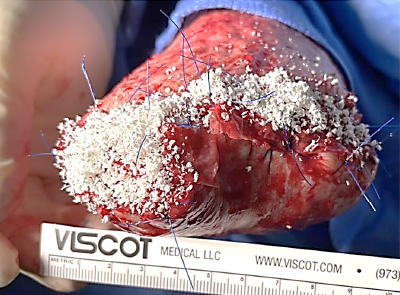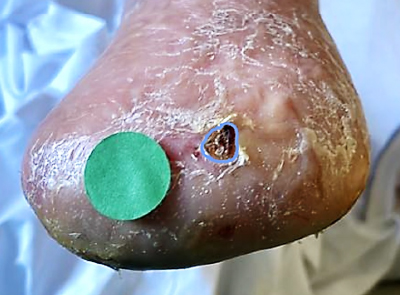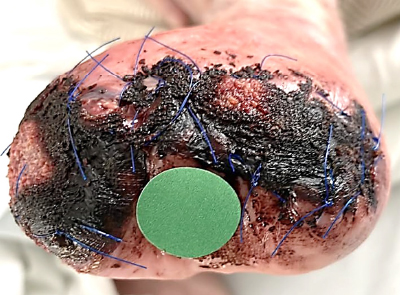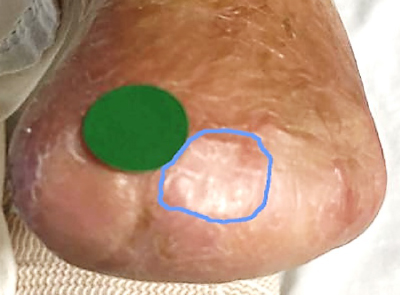Application in a Transmetatarsal Amputation Reconstruction

John C. Lawlor, DPM
Podiatric Surgeon – Associates in Medicine and Surgery Southwest Florida

Initial Assessment

Fully Epithelialized at 14 Weeks
Results
- Fully epithelialized at week 14
- Excellent long-term tissue remodeling and pliability
- No complications
- No recurrence as of 13-months
Patient details
40-year-old male
Medical history
Uncontrolled diabetes with peripheral neuropathy, peripheral arterial disease, and acute osteomyelitis
Case details
- Infection initially managed with urgent I&D and antibiotic therapy
Application photos

Initial Assessment
- 40-Year-old, male
- Medical History: Uncontrolled diabetes with peripheral neuropathy, peripheral arterial disease, and acute osteomyelitis
- Infection initially managed with urgent I&D and antibiotic therapy
- Procedure: Transmetatarsal amputation (TMA) with partial advancement flap
- Applied Myriad Matrix (3-Layer) to wound bed secured with nonabsorbable suture, then covered by Myriad Morcells (500 mg) hydrated in situ with saline and blood

Week 1
- Myriad integrating, dry blood noted
- Care taken to leave graft intact and rehydrated

Week 14
- Fully epithelialized
- No complications

One Year Follow-up
- Excellent long-term tissue remodeling and pliability
- No complications
- No recurrence as of 13-months
Results may vary. Dr. Lawlor has a consultancy agreement with Aroa Biosurgery Limited.
